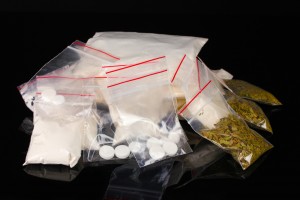by Eleanor Kennedy @Nelllor_
This blog originally appeared on the Mental Elf site on 26th May 2015.
According to 2011 figures for the UK, over 11% of people seeking treatment for substance use were aged between 15-19 years old (Emcdda.europa.eu, 2015).
Cognitive-Behavioural Therapy (CBT) is a treatment that uses cognitive and behavioural techniques to target drug-related beliefs and to alter how these beliefs impact on actions. The individualised nature of CBT may especially be beneficial for young people whose needs differ from those of an adult due to the developmental stage of adolescence.
The factors that moderate the success of CBT treatment among young people are not well-defined. The authors of the current review aimed “to assess the effectiveness of CBT for young people in outpatient non-opioid drug use and to explore any factors that may moderate outcomes” (Filges et al 2015). Non-opioid drugs refers to cannabis, cocaine, ecstasy and amphetamines.

Methods
Numerous online databases were searched and studies were included if:
- The study design was either a randomised, quasi-randomised or non-randomised controlled trial (RCT, QRCT or NRCT)
- Participants were aged 13-20 years old
- Participants were enrolled in outpatient treatment for non-opioid drug treatment
- CBT was the primary intervention, although CBT interventions with an add-on component, such as motivational interviewing, were included
The primary outcome measure was abstinence or reduction of drug use as measured by biochemical test, self-report estimates or psychometric scales. Secondary outcomes of interest were social and family functioning; education or vocational involvement; retention; risk behaviour such as crime rates.
Two separate meta-analyses were conducted.

Results
Study characteristics
Seven studies, reported in seventeen papers, were included in the review. All seven studies were RCTs; six were conducted in the US and one was carried out in The Netherlands. The seven studies were quite different; sample sizes ranged from 43 to 320 participants and the gender of participants enrolled ranged from 54% to 81% male.
CBT was compared to a range of interventions, namely adolescent community reinforcement approach; multidimensional family therapy; chestnut’s Bloomington outpatient program; interactional treatment; psychoeducational substance abuse treatment and functional family therapy. Three evaluated CBT only, while four studies looked at CBT with an add-on component including Assertive Continuing Care, Motivational Enhancement Intervention or Integrated Family therapy.
The studies also differed in terms of CBT delivery; one study provided individual CBT, two had group CBT session, one study included family sessions alongside peer-group therapy, another study had family sessions at the beginning and end of the treatment period, while another study provided a home-based continuing care approach.
Main findings
Separate meta-analyses were conducted on the four studies that looked at CBT with an add-on component and on the three studies that evaluated CBT without an add-on component. Analyses had differing numbers of included studies depending on the variable in question.
Outcome measures were evaluated in three different intervals: short term (beginning of treatment to < 6 months later); medium term (6 months to < 12 months after beginning treatment) and long term (12 months + after the beginning of treatment).
Drug use
- Overall, studies that reported on the effects of CBT with an add-on component did not show a reduction of drug use relative to the comparison treatment in the:
- Short term (SMD 0.14 95% CI -0.64 to 0.36);
- Medium term (SMD -0.06 95% CI -0.44 to 0.32) or
- Long term (SMD -0.15 95% CI -0.36 to 0.06)
- The studies that evaluated CBT without an add-on component were not found to be significantly more effective than their respective comparison treatment in the
- Short term (SMD -0.13 95% CI -0.68 to 0.42);
- Medium term (SMD 0.08 95% CI -0.48 to 0.31) or
- Long term (SMD 0.02 95% CI -0.48 to 0.52)
Recovery
- Studies that reported on CBT with an add-on component showed a statistically significant relative effect on recovery status in the long term (OR = 0.63 (95% CI 0.39 to 1.00)
- Only one study with CBT without an add-on component reported recovery status, this was not statistically significant (OR = 2.89 (95% CI 0.72 to 11.56)
Secondary outcomes
- CBT with an add-on component was not found to have a significant relative effect on retention or risk behaviour
- CBT without an add-on component also did not have a significant relative effect on psychological problems, family problems, school problems, retention or risk behaviour

Strengths and limitations
The review had some strengths. A large number of databases were searched and there were no language restrictions on the literature included. Additionally, all included studies were RCTs with none of the studies classified as having a very high risk of bias.
The small number of studies included in this review is not problematic by itself, however, the choice to carry out separate meta-analyses based on the inclusion of an add-on component to the CBT, reduced the power of the analyses even further.
Additionally, caution must be taken when interpreting the findings of the meta-analyses as the studies were all very different. There was significant heterogeneity between the studies in all but one analysis and also many of the analyses were conducted on only two studies.
The qualitative review of the paper was weak, it was merely a description of the included studies without an evaluation of the differences between them.
Conclusions
The review is inconclusive in terms of CBT being more or less effective than other therapies, as the authors themselves note. No qualitative comparisons were drawn between the studies, this may have been more beneficial given the array of differences between all seven studies.
The review did not consider any factors that may moderate the efficacy of CBT as a treatment for non-opioid drug use and the authors suggest that future studies should include more information about the heterogeneity of treatment effects so that this can be explored.
Given the differences between the included studies, a meta-analysis was probably not appropriate and a good quality systematic review may have been more useful.

Links
Primary paper
Filges T, Knudsen ASD, Svendsen MM, Kowalski K, Benjaminsen L, Jørgensen AMK. Cognitive-Behavioural Therapies for Young People in Outpatient Treatment for Non-Opioid Drug Use: A Systematic Review. Campbell Systematic Reviews 2015:3 10.4073/csr.2015.3
Other references
Emcdda.europa.eu, (2015). EMCDDA | European Monitoring Centre for Drugs and Drug Addiction — information on drugs and drug addiction in Europe. [online] Available at: http://www.emcdda.europa.eu/ [Accessed 15 May 2015].
– See more at: http://www.nationalelfservice.net/mental-health/substance-misuse/cbt-for-substance-misuse-in-young-people/#sthash.xWsGpoWk.dpuf
